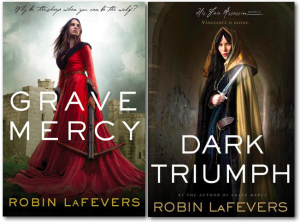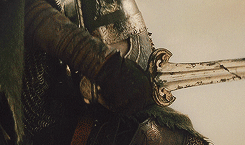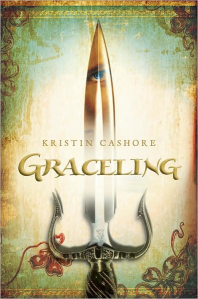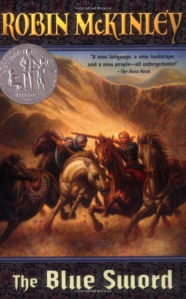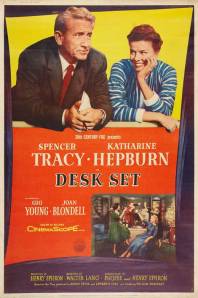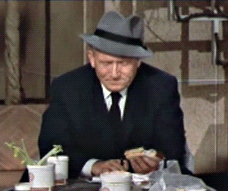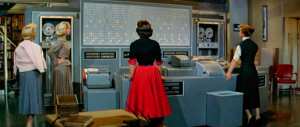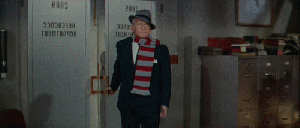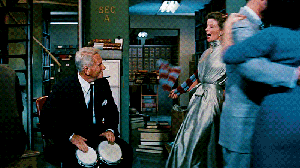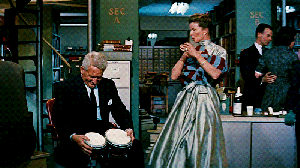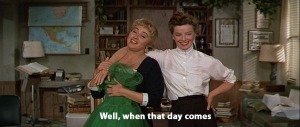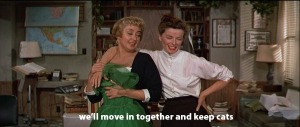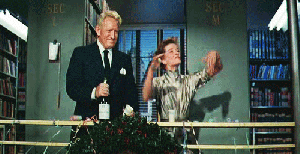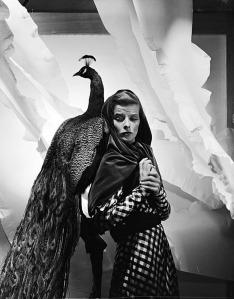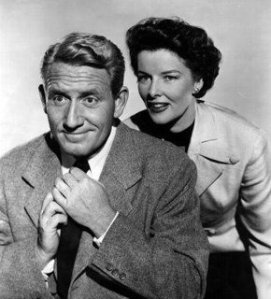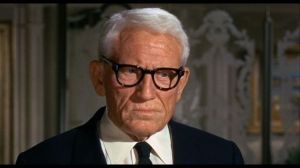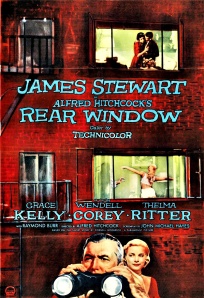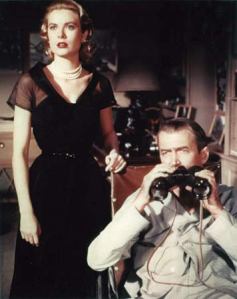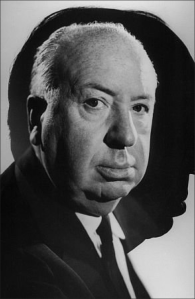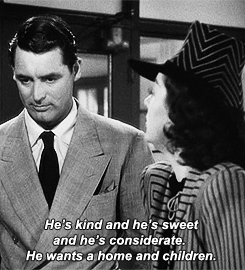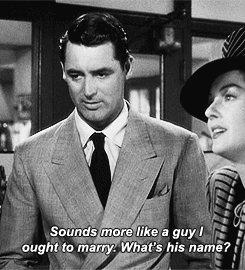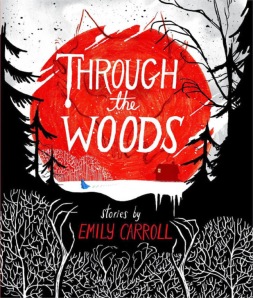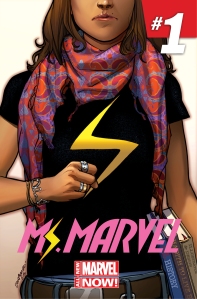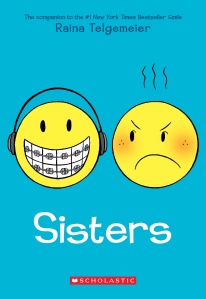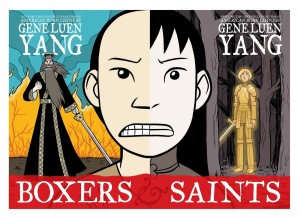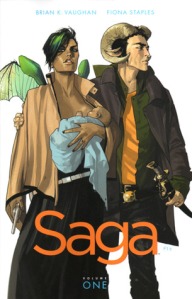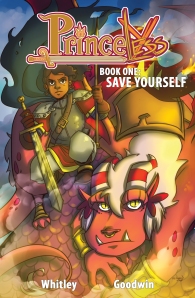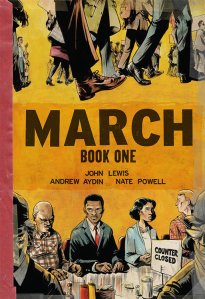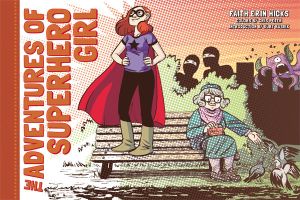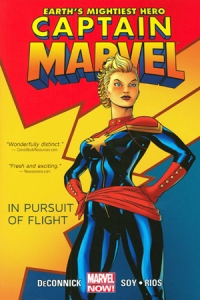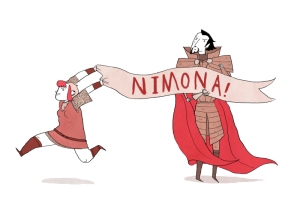In which we reconsider and reevaluate a piece of pop culture. This week, Emily is inspired by the forthcoming release of Robin LaFevers’s novel Mortal Heart to re-read her earlier novels Grave Mercy and Dark Triumph. The three novels together will make up the His Fair Assassin Trilogy.
Lady-led YA fantasy novels are some of my favorite things ever. These books have magic, castles, knights, horses, faux-medievalism, quests, adventure, romance, and – most importantly – ladies taking names and kicking ass. I spent much of my young-adulthood basking in the glory of such women as Alanna of Tortall, Lyra Belacqua, and Eowyn of Rohan. (Okay – the last one wasn’t actually the star of her own novel, but she totally should have been.)
So it’s really no surprise that, when I read them for the first time last year, I absolutely loved Grave Mercy and Dark Triumph. And it’s been truly a delight to re-read them this time around. These are books about strong young women who rise above personal traumas to take up significant roles on the world stage. They’re novels about growing up, negotiating identity, and finding your place in the world. But also, they’re novels about super-powered, teenage nun assassins who get swept up in political intrigue in medieval Brittany (and who fall in love with kind and dashing gentlemen while doing so).
What’s not to love?
Anyway, LaFevers’s His Fair Assassin Trilogy focuses upon a group of young women who are trained at the convent of St. Mortain. The convent of St. Mortain is no conventional nunnery, though. Instead, it’s an institution that has simply reimagined a pagan god of death in the wake of Christianization of Europe. So essentially, its adherents are handmaidens of Death himself. Also, they have supernatural powers. In their training, these women make poisons, practice court intrigue, carry out the will of their saint, and complain about having to learn political history. Really, the convent scenes feel like what would have happened if Madame Pomfrey, Professor McGonagall, and Professor Binns had seceded from Hogwarts to form their own rival school of magic which only admitted women and which was based on an understanding of pre-Christian folklore and a determination to destroy the corrupting forces of society.
The nuns of St. Mortain’s convent aren’t mercenaries or random killers: rather, they’re assassins carrying out the justice (and mercy) of Death. It just so happens that at this particular historical moment, Death is on the side of Brittany in its border dispute with France. So the nuns are mostly working to defend the autonomy of a teenaged Breton duchess against a French regent and the many other powers that would like to take over the duchy.
Grave Mercy focuses upon Ismae, a peasant who embeds herself in the Breton court, gets embroiled in court intrigue, and foils a few coups. Dark Triumph, then, focuses on Ismae’s friend Sybella, a noble-born woman who is called upon to deal with a more specific evil within a certain wellborn family. Both women end up having to balance their own consciences against both the orders from the convent and the pressures from outside political powers. Ismae and Sybella kill bad guys, protect vulnerable women and disenfranchised groups, and end up figuring out that the world is a much more complicated place than their convent had taught them. But ultimately, each realizes that if she asserts her own agency and takes ownership of her own beliefs, she can better her world.
Part of the reason that these books are so fun is that LaFevers has some pretty killer world-building. LaFevers does an awesome job walking the reader through the folk superstition and Catholic hagiography that feed into the convent of St. Mortain and the pantheon of other pagan-gods-turned-Christian-saints. Her world is complex, but never confusing. Also, she’s the sort of author who writes historical fantasy and then includes a long endnote explaining which events have historical precedents and which characters she took from the historical records. She really does a fantastic job blending together these two worlds of super-powered assassin ladies and of border conflict in 1489 Brittany.
Additionally, the romances are delightful. A whole lot of lady-led young adult fantasy novels are sketched around a romantic arc, and LaFevers very much fits herself within genre expectations here. But there’s something so comfortable about a nice meet-cute in a medieval tavern. The romances could be potentially problematic, in that our heroines are seventeen-year-olds and each of them falls for an older man. But LaFevers does a wonderful job negotiating the power dynamics of these relationships so that they never feel remotely skeezy. Indeed, on a recent episode of Pop Culture Happy Hour, Petra Mayer of NPR Books said that the upcoming third book, Mortal Heart, has “the most marvelous modeling of consent that I’ve seen in young adult literature.” Our heroines fall in love with good men who recognize their agency as well as their general awesomeness.
So I very much recommend that you read / re-read these books and check out Mortal Heart when it’s released next week (on 11/4/14). Because, after all, who doesn’t want to read fantasy novels about female empowerment and (to paraphrase Petra Mayer) nuns kicking French ass?
Want similar recs?
Tamora Pierce’s Song of the Lioness Quartet. Alanna disguises herself as a boy because she wants to become a knight. Includes school-room drama, a dashing and flirtatious prince of thieves, a mystical cat, and a few fights against great world-destroying evils.
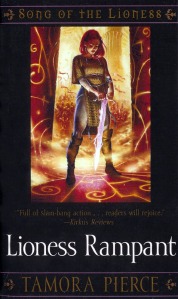
(Source: http://images.fanpop.com/images/image_uploads/Lioness-Rampant-tamora-pierce-59104_476_800.jpg)
Kristin Cashore’s Graceling. Katsa is a noble-born lady with a supernatural gift for fighting and survival. She figures out how to put her powers to good use as she champions the underprivileged, rescues a princess, falls in love, and destroys a tyrant. (The companion novels to Graceling, Bitterblue and Fire, are also awesome.)
Robin McKinley’s The Blue Sword. Lady Harry discovers that she has a mystical connection to a Lady Dragon-Slayer of eons past. (The prequel, The Hero and the Crown, focuses upon said Lady Dragon-Slayer and is quite wonderful too.)
Happy Reading!
